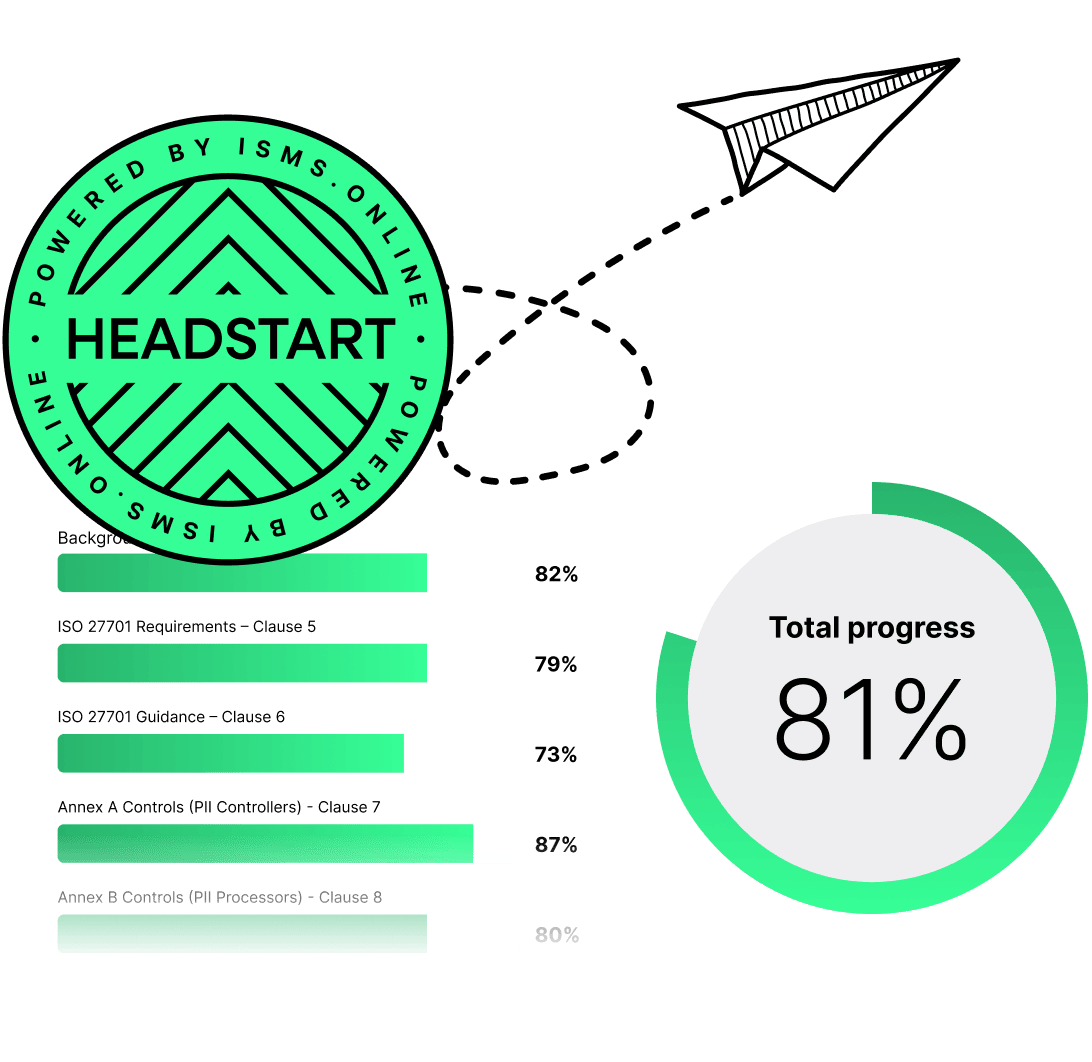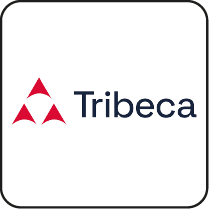What Is Data Protection And Why Must It Form The Foundation Of Your Security Strategy?
Modern organisations survive, win market share, and defend their future by making data protection an active business function—not an afterthought. Your team’s daily activity, the contracts you close, and the trust you signal to every regulator depend on getting this right from the start. It’s not about default encryption or a written policy in your HR drive; it’s about living, breathing control—demonstrated, tested, and documented.
Data Protection: Scope and Business Rationale
Data protection is the coordinated set of measures—technical and organisational—that ensures your company’s information isn’t exposed, held for ransom, or exploited as a legal liability. The stakes have multiplied: boardroom expectations, customer trust, global collaboration, and high-velocity data each demand not just a lock, but transparent evidence of security.
Security Controls That Prove Resilience
Your company’s controls must be visible, not buried in shelfware. Encryption is required but so is role-based access, regular risk assessment, and activity logging reviewed by your compliance officer—not just your IT team. Breaches today are traced back to missed weaknesses and under-documented processes.
No one thanks you for what doesn’t go wrong, but markets remember failures that were obvious to prevent.
The ROI of Attestation-Ready Security
The most successful organisations show up audit-ready, using controls mapped to global standards (such as ISO 27001 and Annex L), tightening auditing cycles and sidestepping legal headaches. Investing now in an actionable Information Security Management System (ISMS) drives down insurance costs, accelerates M&A due diligence, and makes trust the default in vendor negotiations.
Ultimately, every critical proof lies in your ability to demonstrate discipline before an incident makes headlines. Secure your status with visible evidence, not just good intentions.
Book a demoWhat Types Of Data Need Protection And How Do Their Risks Differ?
Every data set in your operation moves with a unique level of risk, legal expectation, and business value. Knowing what sits where—and which access or retention rules matter—saves you from compliance breaches and operational surprises.
Breaking Down Data Risk Profiles
Not all data is created (or regulated) equally. Here’s what distinguishes the landscape:
| Data Type | Example Assets | Risk Profile | Primary Regulation |
|---|---|---|---|
| Personal | Employee records, emails | Identity theft, GDPR fines | GDPR, CCPA, HIPAA |
| Financial | P&L, invoices, banking credentials | Fraud, insider trading | SOX, PCI DSS, GLBA |
| Medical | Patient charts, lab results | Lawsuits, regulatory bans | HIPAA, GDPR |
| Educational | Training records, transcripts | Accreditation loss, FERPA | FERPA, regional mandates |
| Operational | Vendor lists, blueprints | Trade secrets, disruption | ISO 27001, NDAs, contracts |
Risks spike where access, retention, and documentation do not match regulatory and business expectation.
The Hidden Variable: Cross-Department Sprawl
Personal information stored in an unsecured spreadsheet, or financial statements emailed outside of encrypted channels, will redraw your audit exposure overnight. Knowing and cataloguing the movement and location of each data type is now boardroom-level responsibility.
Tailored Controls, Targeted Accountability
Our platform enables you to align varying controls by data type, ensuring that high-impact workflows such as vendor onboarding, financial reporting, and customer support each operate with precise, risk-matched protections—empowering every stakeholder.

ISO 27001 made easy
An 81% Headstart from day one
We’ve done the hard work for you, giving you an 81% Headstart from the moment you log on. All you have to do is fill in the blanks.

Why Is Upholding Data Privacy Principles Essential For Trust And Compliance?
Data privacy is operational currency—a non-negotiable you trade for trust, reputation, and business continuity. You are judged not on your intentions, but on your practices and accountability.
Why Privacy Principles Outpace Policy
Privacy isn’t permission; it’s expectation. Regulations have codified this into enforceable principles: confidentiality, purpose limitation, record minimization, transparency, and accountability. These aren’t checkboxes—they’re frontline risk reducers and market differentiators.
The Reputational Arc: Privacy as a Growth Lever
Privacy lapses make headlines. Stewards of privacy—teams who map, monitor, and respect personal and business data—convert buyers, win RFPs, and smooth client renewals because they exceed minimum legal requirements.
| Principle | Real-World Impact |
|---|---|
| Confidentiality | Restricts access; eliminates accidental leaks |
| Transparency | Builds trust; thwarts speculation and rumour |
| Accountability | Eases audits; limits board liability |
| Purpose Limitation | Prevents scope creep; focuses on business goals |
You don’t have to prove intent to regulators—only that your process is living, logged, and real.
Moving Privacy From Slogan to Standard
When your privacy policies are actionable (not theoretical), and your staff are empowered as stewards, privacy alignment becomes a growth asset. Your privacy maturity shows up in sales cycles, audit scoring, and reputation metrics. A mature ISMS transforms privacy into a market asset.
When Do Global Regulations Define And Drive Your Data Protection Measures?
Compliance timelines aren’t flexible. The market, your executive team, and legal counsel expect you to build, test, and demonstrate controls—on demand. That demand is growing with every contract, country, and industry you enter.
The Regulatory Deadlines That Matter
GDPR, CCPA, HIPAA, SOX, and ISO 27001 are not recommendations—they are thresholds. Each one influences vendor onboarding, due diligence, and licencing in different ways. Their business impact isn’t theoretical: fines, contracts loss, or even executive removal for willful neglect.
| Regulation | Key Requirement | Enforcement Trigger | Potential Penalty |
|---|---|---|---|
| GDPR | Data subject rights, reporting | Complaint, audit, breach | Up to €20M |
| ISO 27001 | ISMS certification, evidence | Bid, contract, M&A | Lost revenue |
| CCPA | Disclosure, opt-out, deletion | Customer request, lawsuit | Class action |
The risks compound in cross-border business or mergers, where every untracked process can stall progress or kill value outright.
From Reactive Patching to Proactive Alignment
Leading compliance teams keep live maps of every requirement, monitor legislative shifts, and run operational “fire drills” that turn last-minute sprinting into continuous assurance. This readiness becomes your competitive edge: preparedness as a business signal, not a sunk cost.
When your controls evolve in lockstep with standards, time and reputation are always on your side.
Other Data Protection Laws & Acts and Information Privacy Law
Various data protection laws and data from around the globe are found in the table below.
| Laws | Area of Jurisdiction |
|---|---|
| General Personal Data Protection Law (Also known as LGPD and Lei Geral de Proteção de Dados Pessoais) | Brazil |
| California Consumer Privacy Act (CCPA) | California |
| Privacy Act | Canada |
| Privacy Act 1988 | Australia |
| Personal Data Protection Bill 2019 | India |
| China Cyber Security Law (CCSL) | China |
| Personal Information Protection Law (PIPL) | China |
| Data Protection Act, 2012 | Ghana |
| Personal Data Protection Act 2012 | Singapore |
| Republic Act No. 10173: Data Privacy Act of 2012 | Philippines |
| The Russian Federal Law on Personal Data (No. 152-FZ) | Russia |
| Personal Data Protection Law (PDPL) | Bahrain |

Free yourself from a mountain of spreadsheets
Embed, expand and scale your compliance, without the mess. IO gives you the resilience and confidence to grow securely.

Where In The Data Lifecycle Should Protective Controls Be Applied?
Data protection only works if it covers the entire journey—from intake to deletion, every record is a liability and an asset. Every transfer, edit, or access event moves risk around your organisation. Where you miss a step, opportunity (or attack) finds a path.
Lifecycle Friction Points: A Reality Checklist
- Collection: Weak verification or unclear purpose gathers more risk than value.
- Classification: Untagged or loosely coded records lose context, creating blind spots in retention and retrieval.
- Storage: Unsegmented drives or generic cloud folders invite unauthorised access and accidental exposure.
- Processing: Lack of monitoring and audit logs let misuse slip through unnoticed.
- Deletion/Archival: Data held past necessity—whether legal or operational—multiplies both cost and exposure.
Automated Lifecycle Management
Smart organisations set location-based retention rules, automate deletion, and leverage audit logs that do not simply “record,” but alert and escalate process anomalies.
Every unmanaged record is a corporate memory leak—and a regulator’s entry point.
Closing Gaps with ISMS-Linked Controls
Our platform’s workflow structure automates and documents these lifecycles, ensuring not only audit-readiness, but decisional clarity. Your team acts with full control, not delayed reaction.
How Can Automation Enhance Data Protection And Streamline Compliance Processes?
Manual compliance is a liability disguised as tradition. Every unchecked box, overlooked policy, and missed renewal deadline is an unseen invitation to risk.
Why Automation Outpaces Manual Band-Aids
Automated compliance grabs the essentials: every regulatory update, access event, document status, and workflow change—unedited by human error or omission.
Automation’s Impact Table
| Workflow | Manual Risk | Automated Outcome |
|---|---|---|
| Evidence Gathering | Omitted docs | 100% traceable submissions |
| Task Assignment | Delayed handoffs | Live status, forced reminders |
| Audit Preparation | Last-minute rush | Year-round readiness |
| Policy Review | Missed cycles | Scheduled, always-on updates |
Instant notification, exception escalation, and platform-wide compliance dashboards compress compliance from months to days.
Machine Intelligence as Standard Equipment
AI-driven compliance monitoring predicts risk, flags drift, and can show you (and your auditors) the current state in seconds—not just at review.
You don’t want more alerts—you want fewer emergencies. That’s what machine intelligence actually buys.
By centralising these systems, our platform elevates your status: fewer manual errors, faster audits, and a visible culture of competence.

Manage all your compliance, all in one place
ISMS.online supports over 100 standards and regulations, giving you a single platform for all your compliance needs.

What Challenges Derail Effective Data Protection And How Can They Be Overcome?
You can’t manage what you can’t see, and you can’t prove control if you’re always catching up. Most failures are not sudden—they’re accumulations of drift, decentralisation, and missed handoffs.
Fracture Points: Where Efforts Unravel
- Resources spread too thin: Coverage falters, audit cycles stretch, and incidents multiply.
- Manual bloat: Task overload and scatter-shot remediation disguise rather than solve risk.
- Process fragmentation: Systems built in silos are breached in the gaps between them.
- Legacy inertia: Old habits, tools, and underfunded upgrades fail to match modern threats and expectations.
The day after a resource gap costs you certification is the day procurement moves to your competitor.
Consolidation and Automation: The New Normal
Our platform automates documentation and workflow assignment, highlights gaps before they turn into audit events, and centralises process tracking. The result: a single source of truth, real-time status, and an audit trail you can actually trust—not only internally, but to every third-party and regulator who asks.
By consolidating, you move your team from reactive churn to structured delivery—and you set the pace for both compliance and reputation in your sector.
Can You Afford To Risk Non-Compliance? Set The Standard For Assurance
Non-compliance is never an abstraction: It’s a sudden operational freeze, revenue drain, and brand problem that few recover from. Your status, reputation, and authority stem not just from what you say, but what you prove—today and every day after.
From Compliance Risk to Trusted Authority
Those who define the standard for readiness become benchmarks. Rather than fear audits or anniversaries, they treat both as opportunities to show stakeholders—and themselves—that their systems work, their leadership is alert, and their culture does not tolerate drift or delay.
Great companies don’t just pass audits; they shape what assurance really means.
Your Next Move: Outpace, Outperform, Ascend
Align your team, secure your status. With ISMS.online, you transform oversight into oversight leadership, signal confidence to every board and buyer, and make every operational challenge another opportunity to raise the bar. Trusted compliance is not an end state—it’s the arena where leaders set their own standards and competitors follow.
Book a demoFrequently Asked Questions
What is data protection and why does it determine your organisation’s operational future?
Protecting your data is no longer a nice-to-have—it is the underlying contract you make with every partner, regulator, and client. The moment a compliance breach or information leak occurs, your board faces not just monetary penalties but an existential question: can you still be trusted in the market? An Information Security Management System (ISMS), especially one aligned to Annex L IMS, gives your team active evidence, not just good intentions—a posture regulators respect and buyers demand.
Modern data protection means more than strong passwords and well-written policies:
- You surface every weak point, from shadow IT to supply chain ambiguity.
- Technical controls like encryption and multifactor sit beside mandatory documentation, mapping every asset to control and escalation playbooks.
- Risk isn’t conceptual—every misstep now means public accountability and fast-following litigation.
A sprawling attack surface and international compliance shifts demand a living system. If your platform can generate proofs in real time, your company can walk into any negotiation or incident with quiet authority. This is traceable assurance—a way to hold the line, even when the unexpected hits.
The real leadership signal: showing evidence before a crisis, not scrambling for facts after it.
The question is never whether you have processes; it’s whether you can prove their operation—without delay, without doubt. Not only does this stance insulate you from disaster, it marks you as a destination for partners who require continuity and compliance.
How do different data types redefine risk—and your mandate for control?
Not all data demands equal protection, but every unguarded entry is a backdoor to liability. Personal data—names, emails, even meta-data—triggers privacy obligations and nearly instant scrutiny after an incident. Financial or operational intelligence might not attract the same penalties, but the market impact of a leaked deal book or pricing model lasts for years.
| Data Category | Regulatory Trigger | Primary Vulnerability | Consequence |
|---|---|---|---|
| Personal Info | GDPR, CCPA, national laws | Identity theft, unwanted exposure | Customer loss, audit, lawsuits |
| Financial | PCI DSS, SOX, GLBA | Fraud, insider trading, blackmail | Market devaluation, legal action |
| Operational | ISO 27001, NDAs, procurement standards | Sabotage, competitor mapping | Commercial exclusion, theft |
| Health/Medical | HIPAA, GDPR/PII, sector rules | Legal breach, care disruption | Fines, service loss, trust erosion |
| IP & Contracts | NDA, contract law, ISO 22301 | IP leakage, M&A sabotage | Competitive loss, damaged deals |
This forces a strategic pivot: treat every dataset according to its risk and value—not convenience. Only a well-integrated ISMS gives you that mapping in minutes.
If your strategy is built on uniform controls, you’re overspending and under-protected. Adaptive, data-driven systems allow your InfoSec team to outpace attackers and compliance mandates—and let executives sleep at night.
What have you done today that a regulator would respect? How will your board react when the next market-shaking incident includes your name?
Why does upholding data privacy change every conversation with your board and your customers?
True privacy protection doesn’t just tick compliance boxes—it enables trust at every level of your business. Instead of showing up to an RFP with empty promises, you bring the receipts: enacted controls, logged consent, live access records, and a system that stands up to scrutiny.
Privacy-first organisations:
- Automate consent and rights management, removing human omission as a risk factor.
- Prove accountability instantly, quelling board or vendor anxiety in the first five minutes of any review.
- Create a competitive moat; buyers will move to those who can guarantee privacy in contracts, not just in font size at the end of a 60-page SLA.
This approach forces privacy out of legalese into the operations suite, integrating technical and organisational controls that move at the speed of business—where proof, not posturing, defines your real integrity.
Privacy compliance is belief, tested daily, that your system is more than a list of intentions.
In every board meeting or audit, the real question isn’t “Are we compliant?” but “Can we stand up to any regulator, competitor, or customer and prove it, this afternoon?”
When do global regulations change the cost of failure—and your playbook for resilience?
Patterns emerge after every high-profile breach: regulators didn’t care what company policies said, only that controls worked. Local rules—GDPR, DORA, NIS2—move fast and with teeth. Timing is everything, and slow adaptation costs more than lost contracts.
| Compliance Milestone | Operational Trigger | Delay Cost | Status Signal |
|---|---|---|---|
| GDPR Readiness | EU customer, data transfer | Fines, blocked transactions | Trusted cross-border supplier |
| NIS2/UK NIS Regs | Critical infrastructure supply | Supply chain drop, exclusion | National ecosystem integration |
| DORA | Financial, insurance, fintech | Regulatory lockout | Preferred vendor visibility |
| CCPA/Privacy Rules | U.S. consumer business | Lawsuit, media, PR fallout | Consistent market engagement |
You move from laggard to leader by deploying dynamic systems; you audit, track, and close gaps before the guidance changes. Every control logged, every role updated to match compliance revisions, every report delivered in days—not quarters.
Product launches, investment rounds, and strategic hires falter for teams who bet on status quo. Regulatory velocity is the new test of company resilience.
Where does the lifecycle of your data create silent weaknesses even robust controls can’t catch?
Most ISMS audits uncover a silent threat: organisations secure data at rest, but lose track during sharing, archival, or deletion. Every handoff, migration, and archive event is a window for risk unless your controls are living, mapped, and enforced at every lifecycle stage.
A detailed lifecycle approach addresses:
- Collection: Secure intake and consent capture.
- Classification: Assigning risk level and access protocols.
- Storage: Encryption, controlled access, and versioning.
- Processing: Monitoring, role-based responsibility, and live audit logs.
- Transfer: Traceable, policy-enforced movement, both internal and cross-border.
- Deletion/Archival: Documented, automated removals and retention checks.
If your controls die when data moves, attackers spot it before you do. Constant, automated lifecycle mapping—updated as technology and law advance—turns dangerous ambiguity into assurance.
How are you surfaced against the coming investigation, the next integration, the future threat? Only a living lifecycle system puts you permanently on the right side of proof and reputation.
How does automation transform compliance from drain to driver—and what kind of leader does that make you?
Every unclosed task, ommited review, or lost piece of evidence under manual compliance is a lurking cost—often discovered under audit or breach. With automation, the ISMS shifts into relentless forward motion: reminders aren’t optional; tasks are closed, recertification happens on time, and reporting is live.
Your system should:
- Surface every gap, missed approval, and expired assertion in real time.
- Automate evidence gathering and report production.
- Assign, escalate, and track accountability so nothing falls between owners.
- Score your compliance posture in dashboards that inform leadership—daily, not quarterly.
| Before Automation | After Automation (ISMS) |
|---|---|
| Missed deadlines | SLA coverage |
| Churned documentation | Version control for audit |
| Owner ambiguity | Role-based accountability |
| Proof on demand fails | Immediate report delivery |
Reliability isn’t luck—it’s the sum of details your platform closed for you.
You become not just a survivor of the latest wave of change or threat, but a standard setter. Colleagues recognise the difference instantly: a team running systems that close the loop. That status is earned—by your operational results and your organisation’s visible reputation.









